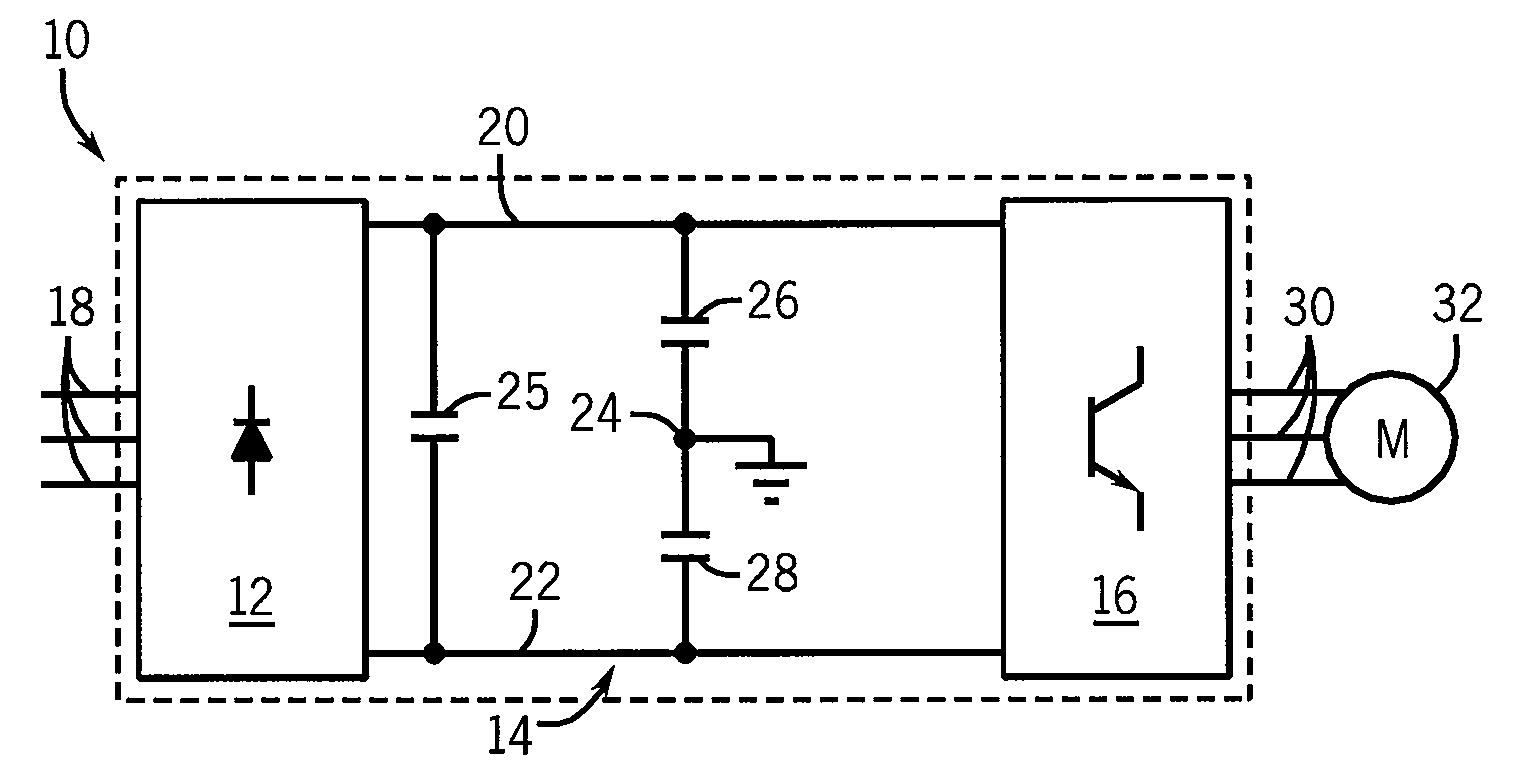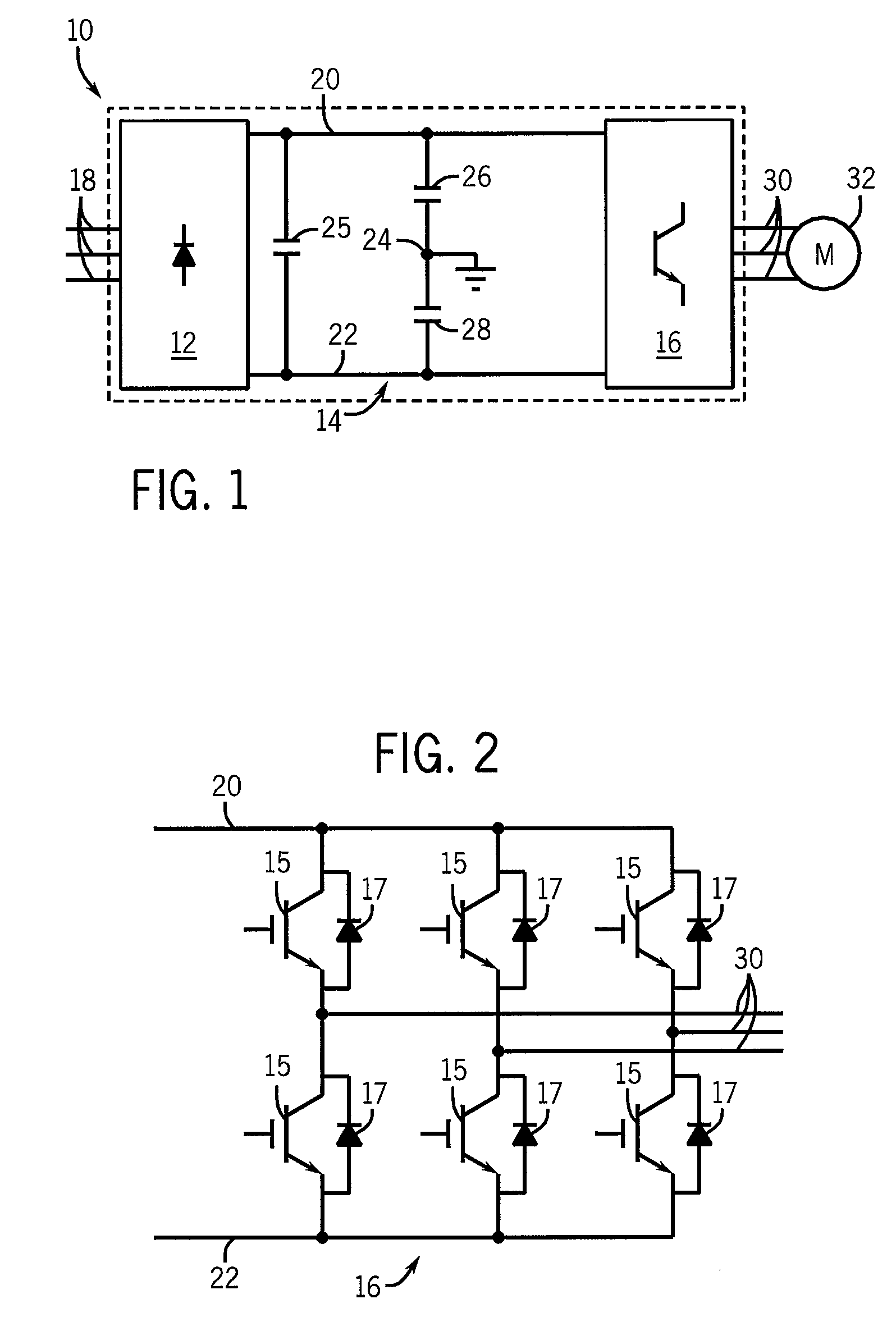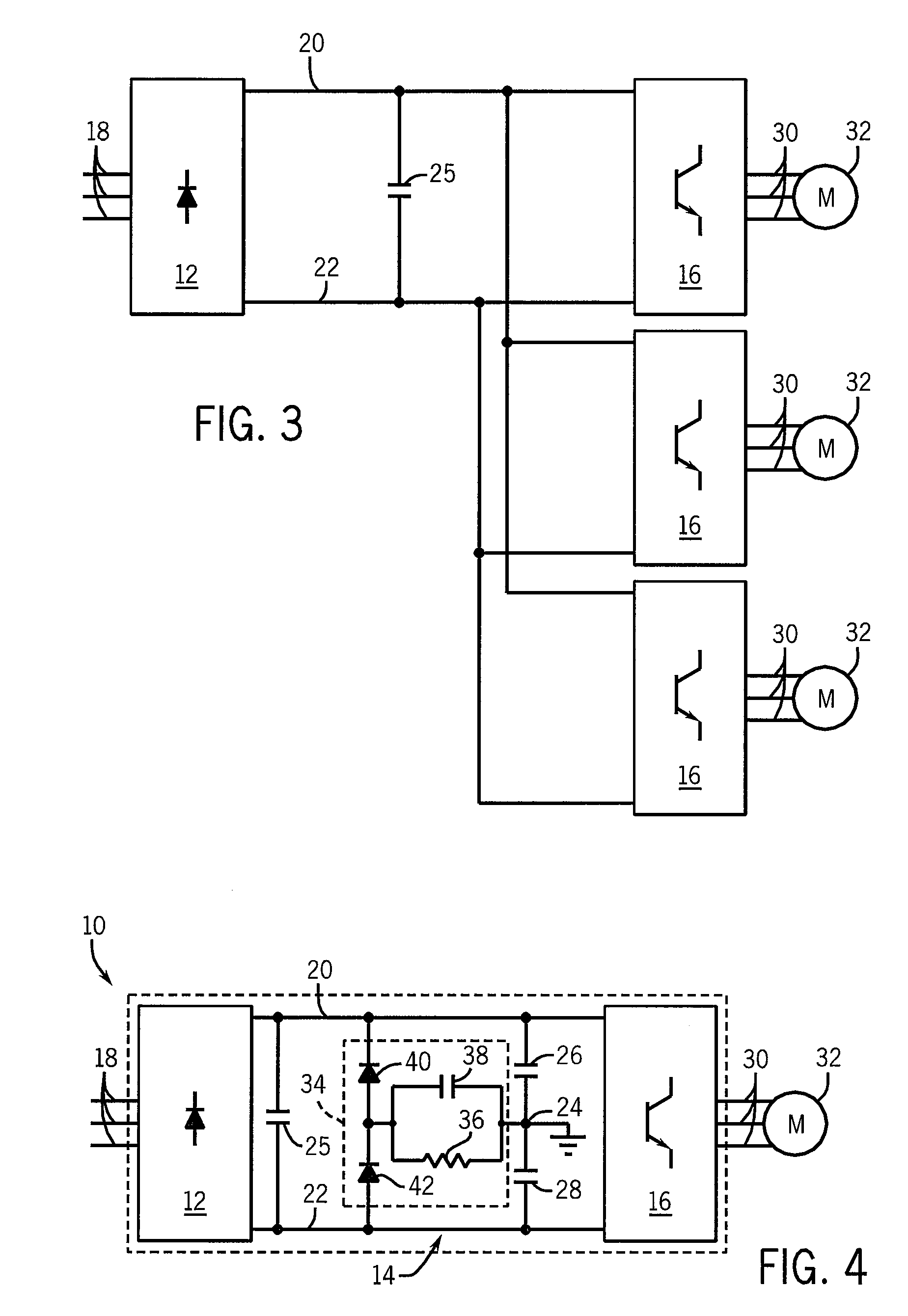DC bus clamp circuit to prevent over voltage failure of adjustable speed drives
a technology of adjustable speed and clamp circuit, which is applied in the direction of emergency protective arrangements for limiting excess voltage/current, arrangements responsive to excess voltage, electric motor control, etc., can solve the problems of shortened life of drive components, negative side effects, and high frequency electrical transients, and achieves lower power ratings
- Summary
- Abstract
- Description
- Claims
- Application Information
AI Technical Summary
Benefits of technology
Problems solved by technology
Method used
Image
Examples
Embodiment Construction
[0030]Referring to FIG. 1, a common topology for an Adjustable Speed Drive 10 is illustrated. The ASD 10 includes a rectifier section 12, a DC bus section 14, and an inverter section 16. The ASD 10 receives three-phase AC input voltage 18 into the rectifier section 12. The rectifier section 12 may include passive or active rectification, for example diodes, thyristors, silicon controlled rectifiers, or transistors as is known in the art, to convert the three-phase AC input voltages into DC voltages. These DC voltages are present on the positive and negative DC bus rails 20 and 22 of the DC bus section 14. Typical DC voltages may be a positive or negative 650 volts for a common 460 volt, three-phase AC input voltage. To maintain a stiff DC voltage on each of the positive and negative bus rails, 20 and 22, a DC bus capacitor 25 is included between the rails 20 and 22, wherein a stiff DC voltage remains approximately equal to the peak value of the AC input voltage 18 despite transient ...
PUM
 Login to View More
Login to View More Abstract
Description
Claims
Application Information
 Login to View More
Login to View More - R&D
- Intellectual Property
- Life Sciences
- Materials
- Tech Scout
- Unparalleled Data Quality
- Higher Quality Content
- 60% Fewer Hallucinations
Browse by: Latest US Patents, China's latest patents, Technical Efficacy Thesaurus, Application Domain, Technology Topic, Popular Technical Reports.
© 2025 PatSnap. All rights reserved.Legal|Privacy policy|Modern Slavery Act Transparency Statement|Sitemap|About US| Contact US: help@patsnap.com



